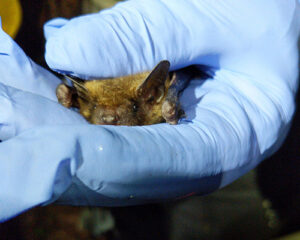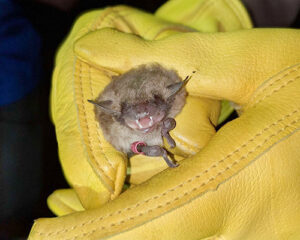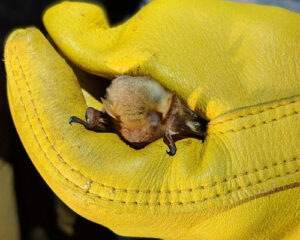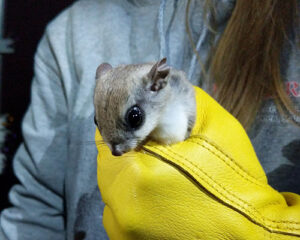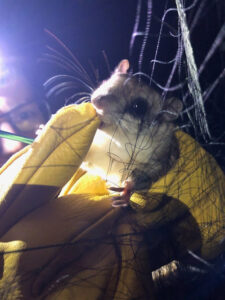Flora & Fauna
Spanning multiple habitat types, including old-fields, successional forest, old-growth forest, and forest wetlands, the Hutcheson Memorial Forest, is home to more than 350 species of vascular plants and more than 200 species of birds observed. For a complete downloadable list of observed flora and fauna click on links to the right.

The canopy dominant tree species include white oak (Quercus alba), red oak (Q. rubra), black oak (Q. veluntina) and sweet pignut hickory (Carya glabra). Other common trees include sugar maple (Acer saccharum), red maple (A. rubrum), and black cherry (Prunus serotina). Flowering dogwood (Cornus florida), which were once prolific in the midstory, can still be found throughout the old forest and forest edges.
The understory of the old growth forest was once dominated by maple-leaved viburnum (Viburnum acerifolium), but in recent years the herbaceous layer has been impacted by non-native plants and herbivory from deer. Mayapple (Podophyllum peltatum) is common throughout the spring, while many spring ephemerals and woodland herbs are still present and are being closely monitored since the construction of a deer fence in 2015. In addition to forest herbs, the old fields, which are managed to represent different lengths of time since release from management, are dominated by many species of native grasses, wildflowers.
A wide variety of song birds can be found at HMF. In the forest, visitors can expect to see Tufted Titmice (Baeolophus bicolor), Wood Thrushes (Hylocichla mustelina), White-breasted Nuthatches (Sitta carolinensis), Hairy Woodpeckers (Picoides villosus), and Common Yellowthroats (Geothlypis trichas) in addition to many other common species. Indigo Buntings (Passerina cyanea), American Goldfinches (Spinus tristis), Yellow Warblers (Setophaga petechia), and Palm Warblers (Setophaga palmarum) can also be found in the fields surrounding the old growth forest. In total over sixty species have been observed at Hutcheson Memorial Forest but you can typically see twenty to thirty species on a given day.
Full lists of known species are found below:
Mammals of HMF
Birds of HMF
Flora of HMF
Recently Captured Photos of Wildlife at HMFC
Here at HMFC we have seen a variety of wildlife on our trail cameras, including mammals birds, reptiles, and more. Some mammals we commonly capture are: white-tailed deer (Odocoileus virginianus), red fox (Vulpes vulpes), coyote (Canis latrans), raccoon (Procyon lotor), Virginia opossum (Didelphis virginiana), and Eastern cottontail (Sylvilagus floridanus).
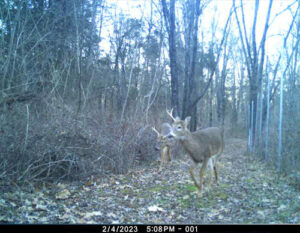
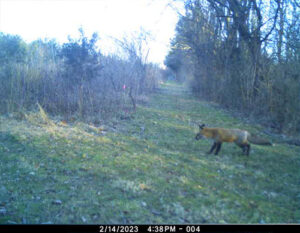
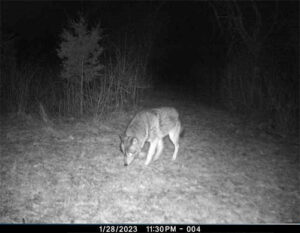
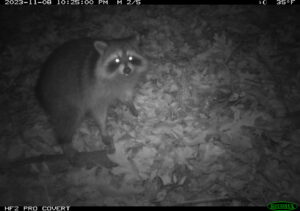
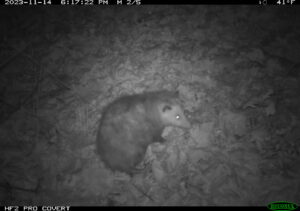

Mist Netting for Bat Conservation at Hutcheson Memorial Forest
In 2018, Kathleen Kerwin and other members of the Rutgers Wildlife Cooperative Extension team conducted a session of mist netting for bats within the old growth section of Hutcheson Memorial Forest. “Mist netting” is the act of setting up fine-mesh nets in an area to capture flying wildlife for research purposes. The method is one of the least invasive ways to gain an understanding of the flying species present in an area, and one of the only ways to capture bats safely. Using this method, Kerwin and her team were seeking to discover any bat species of conservation concern that may be present at HMFC and to use this interaction to learn more about the specific habitat needs of the bats that inhabit the area by tracking them to their roost trees. Two species of bats were captured in the night, big brown bats (Eptesicus fuscus) and eastern red bats (Lasiurus borealis). Amid all the bat capturing, a surprise guest (a southern flying squirrel (Glaucomys volans)) joined in on the evening. All captured animals were handled by experts using the appropriate state and federal permits, and no animals were harmed in the process.
